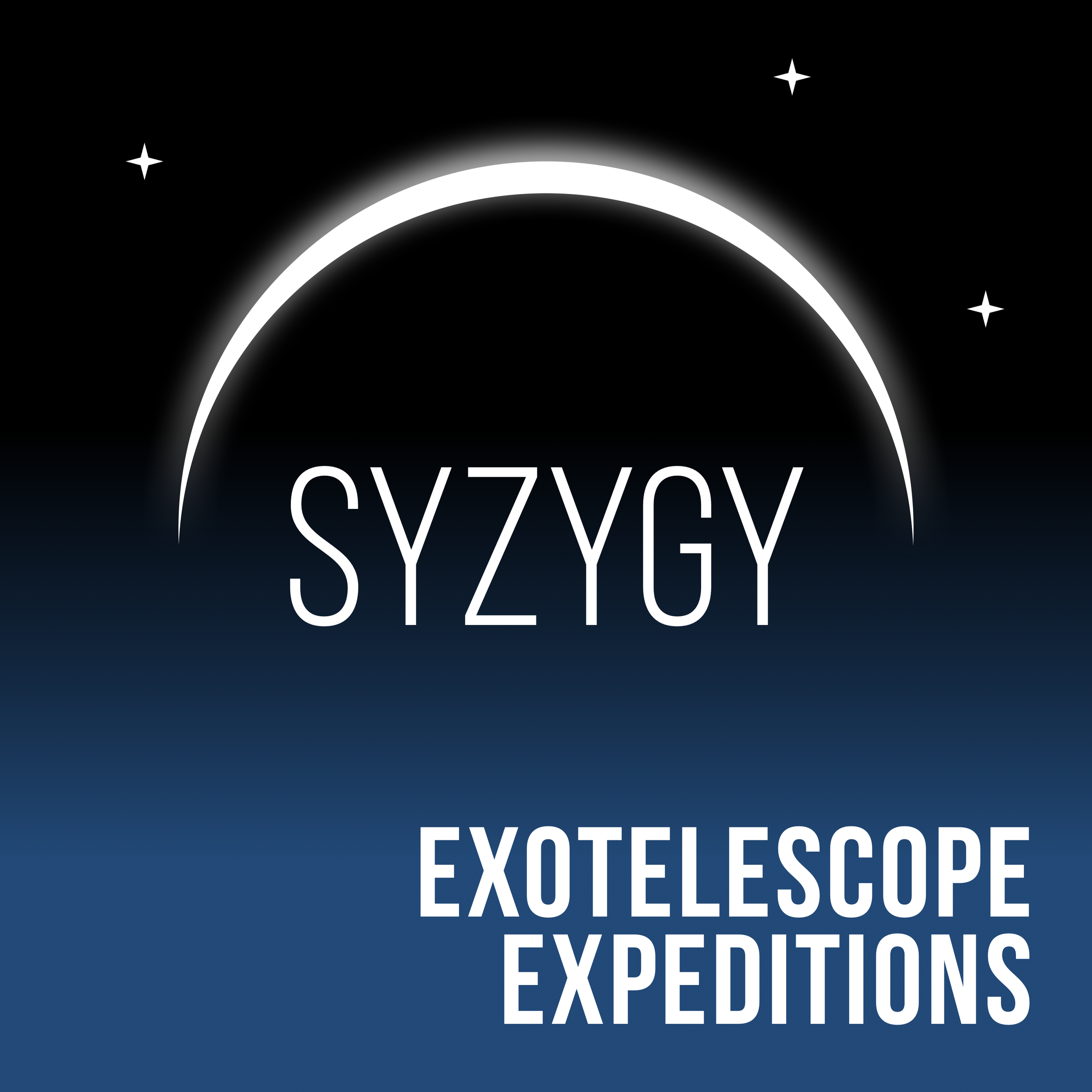
Syzygy (sĭz′ə-jē)
noun : an alignment of three celestial bodies, such as the sun, moon, and earth during an eclipse.
also : a podcast wherein real-life, actual astronomer Dr Emily Brunsden from the University of York and not-astronomer but enthusiastic science nerd Dr Chris Stewart explore the universe.
Support us on PATREON
Find us at : Apple Podcasts | Spotify | YouTube | RSS
latest episode
In this season of exploring life in the universe, it's time to consider life closer to home: what are the chances we will find evidence of life — present or past-tense — in our own back yard of the Solar System. Emily's fabuous colleague Dr Clément Moissard, plasma physicist at the University of York, joins us to discuss the chances of finding signs of life on Mars, on the icy moons of Jupiter and Saturn ... and even on Pluto?! Surely not. It's a fascinating and fun conversation with plenty of surprises: Chris somehow missed the fact that we landed on Titan in 2005, Clément is super keen to visit mysterious Planet 9, and Emily just seems fixated on tasty space fish.

listener reviews
I cannot tell you how many times I have walked outside to stare at the night sky at 4am after listening to one of your episodes …
They have more to say about astronomy than you can possibly imagine …
Awesome, quirky astronomy podcast keeping us updated about the latest astronomy news.
I really enjoy listening to your podcasts, I literally check your web everyday or two waiting for a new episode!
⭐️⭐️⭐️⭐️⭐️ — Love these podcasts — informative and fun! Chris and Emily work well together making the podcasts really engaging
⭐️⭐️⭐️⭐️⭐️ — Simple, informative and a pleasure to listen to. What more can you want?
⭐️⭐️⭐️⭐️⭐️— This podcast provides a great review of new developments in these fields along with background information to help the listener understand the context of the new research. Highly recommended!!!
⭐️⭐️⭐️⭐️⭐️ — … the alignment of Chris with Emily is what makes this wonderful. Chris teases out a simple explanation from Emily that is understandable to non-scientists like me …
recent episodes
In this season of exploring life in the universe, it's time to consider life closer to home: what are the chances we will find evidence of life — present or past-tense — in our own back yard of the Solar System. Emily's fabuous colleague Dr Clément Moissard, plasma physicist at the University of York, joins us to discuss the chances of finding signs of life on Mars, on the icy moons of Jupiter and Saturn ... and even on Pluto?! Surely not. It's a fascinating and fun conversation with plenty of surprises: Chris somehow missed the fact that we landed on Titan in 2005, Clément is super keen to visit mysterious Planet 9, and Emily just seems fixated on tasty space fish.
Having established that the hunt for life in the galaxy ought to begin with an appropriate star, Emily turns our attention towards suitable planets. But what makes a hospitable home for life? It’s complicated, and it seems whatever way we look at it, we don’t have a lot of candidates to choose from. Emily discusses earth-like rocky planets, ocean worlds, and wonderfully-named Chthonian planets, before letting rip with some wild speculation. I mean, life could be anywhere, right?
We're back with Season 3. For the next six epiosodes we're talking life in the universe, and so far we have N=1: we know there's life on Earth, but nowhere else as yet. Those are challenging statistics. In this episode Emily makes the case that to explore the possibility of life elsewhere in the cosmos, you need planets — and to have planets, you need stars. She then proceeds to whittle the number of potential life-bearing systems in our galaxy down to a scarily small number. But all is not lost, we still have five episodes to fill with hope and optimism.
According to one survey, around one-third of Australians think aliens not only exist, but have actually visited Earth. That's ... a bit fraction. In this final episode of season 2, we ask how we'd even find out if life exists around other stars. Emily introduces the Habitable Worlds Observatory, an incredible new space telescope that's just in the early design phase and not due for years yet, with lots of technical and scientific holes to plug. Whether we can find life on other planets, who knows ... but maybe we've just found season three of Syzygy!
Exo-planets, sure. Exo-moons and -comets? FIne. But exo ... telescopes?! Emily is going out on a limb in this episode, expanding the definition of telescope to include things that measure stuff in space, and we're here for it! Which means we really do have a few telescopes out there beyond the Solar System, in the shape of Voyagers 1 and 2, with a few more waiting in the wings.
We know, we know — we did exoplanets last time. But that was the current state-of-play and a 2024 exoplanets wrapped update. In this episode, Emily looks to the future! She does a deep dive into the promise of the just wonderful JWST, as it prods exoplanets in ways they’ve never been prodded before.






